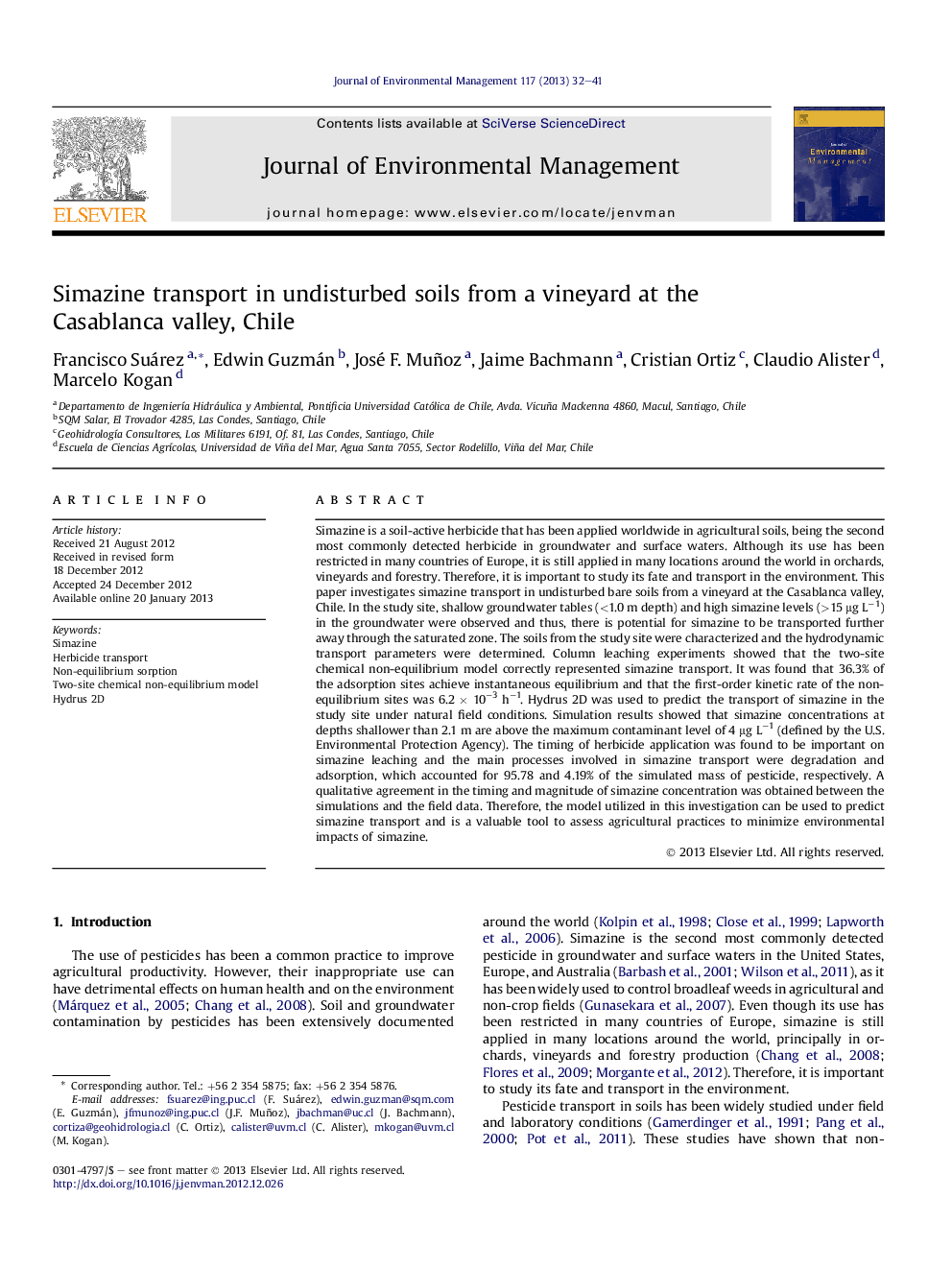| Article ID | Journal | Published Year | Pages | File Type |
|---|---|---|---|---|
| 1056298 | Journal of Environmental Management | 2013 | 10 Pages |
Simazine is a soil-active herbicide that has been applied worldwide in agricultural soils, being the second most commonly detected herbicide in groundwater and surface waters. Although its use has been restricted in many countries of Europe, it is still applied in many locations around the world in orchards, vineyards and forestry. Therefore, it is important to study its fate and transport in the environment. This paper investigates simazine transport in undisturbed bare soils from a vineyard at the Casablanca valley, Chile. In the study site, shallow groundwater tables (<1.0 m depth) and high simazine levels (>15 μg L−1) in the groundwater were observed and thus, there is potential for simazine to be transported further away through the saturated zone. The soils from the study site were characterized and the hydrodynamic transport parameters were determined. Column leaching experiments showed that the two-site chemical non-equilibrium model correctly represented simazine transport. It was found that 36.3% of the adsorption sites achieve instantaneous equilibrium and that the first-order kinetic rate of the non-equilibrium sites was 6.2 × 10−3 h−1. Hydrus 2D was used to predict the transport of simazine in the study site under natural field conditions. Simulation results showed that simazine concentrations at depths shallower than 2.1 m are above the maximum contaminant level of 4 μg L−1 (defined by the U.S. Environmental Protection Agency). The timing of herbicide application was found to be important on simazine leaching and the main processes involved in simazine transport were degradation and adsorption, which accounted for 95.78 and 4.19% of the simulated mass of pesticide, respectively. A qualitative agreement in the timing and magnitude of simazine concentration was obtained between the simulations and the field data. Therefore, the model utilized in this investigation can be used to predict simazine transport and is a valuable tool to assess agricultural practices to minimize environmental impacts of simazine.
► Simazine was monitored in a field site with shallow groundwater tables. ► Field concentrations were higher than the simazine maximum contaminant levels. ► The spatial distribution of the hydraulic and hydrodynamic properties was estimated. ► Chemical non-equilibrium processes represented adequately simazine transport. ► Numerical simulations were valuable tools to assess simazine transport.
